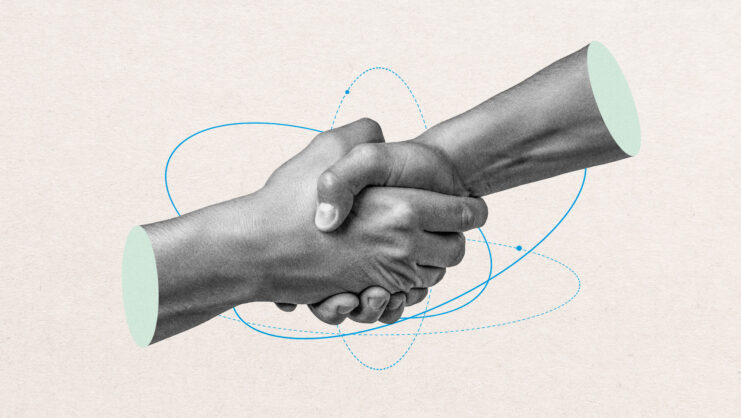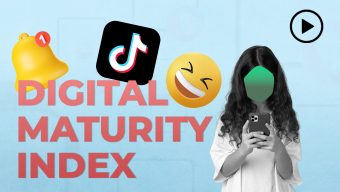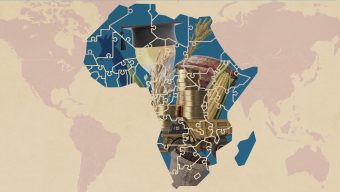Companies use diversity in a wide variety of ways. The question is whether being different is positive or negative. Should someone who is different act like everyone else—adapting to the majority and abandoning his differences—or stay the way he is? I would argue that diversity per se is neither good nor bad; it is good for organizations as long as they know how to manage it and channel it properly.
Integrating differences
Monochronic people, who see time as linear, tend to perform one task after another. For polychronic people, however, time is circular. They are able to juggle multiple tasks, starting one thing while thinking about something else. Consequently, conflict can arise between these two types of people. However, each group excels at a certain type of task: one is well suited to tasks requiring attention to detail and concentration, while the other excels in more dynamic contexts. Organizations therefore need both types of people and must learn to integrate them.
Similarly, some people are very optimistic, while others are more realistic. Again, for an organization the best approach is to have a mix of both types, combining the enthusiasm of the optimists with the realism of the realists; if either is lacking, you are destined to act foolishly.
Similarly, some cultures are highly collectivist—with people working together happily and sharing everything—whereas others tend to be more individualistic.
The key is to integrate differences, making sure that all team members feel accepted and valued. This is the truly crucial asset, for diversity is a double-edged sword. It can be great if managed properly, providing innovation, flexibility, and a variety of opinions. But without balance, it breeds chaos and discouragement. Being different, therefore, is not intrinsically good or bad. We live in a diverse world, but we can extract value from our differences, taking each person’s differences and putting them together to create a more flexible context.
Diversity is a double-edged sword. It can be great if managed properly, providing innovation, flexibility, and a variety of opinions. But without balance, it breeds chaos and discouragement.
Managing differences
In today’s collaborative age, everyone has many identities and affiliations with different groups. Differences can make us feel quite isolated, but we also yearn to belong to a common group where we can show our true colors. Hence the idea of belonging.
We have belonged to tribes since the beginning of time; community makes us feel very good, safe, and secure. In tightly closed communities, however, people may crave independence. As sometimes happens in families, people feel the need to breathe, get out, and grow. But in the last fifty years, we have witnessed the creation of a highly individualistic society characterized by a different yearning: the desire to belong.
To paraphrase the philosopher Hannah Arendt, we need solitude to grow but a community to act. Both the community and the individual are necessary. What’s important is the balance between individualism and community. As long as you manage to get out and grow, you can contribute to the group. Human life needs individualism to grow and think, and it needs groups to act.
Origin, growth, and aspiration
Each of us has original, growth, and aspirational identities.
Original identities are basically our legacy: sex, culture, language, etc. They connect us to the past. We don’t choose them; we are born with them. Over the course of our lives, we acquire growth identities that encompass our high school friends, our interests, our studies, our life choices, etc. Our original identities represent our past, but our growth identities represent our present, what we share with others, our emotional attachments.
Finally, we have our aspirational identities, which are where we truly deposit and foster our differences. Our original identities connect us to the past and make us part of a group. Our growth identities help us make friends and relate to others. And our aspirational identities help us find people worthy of emulation who can help us develop.
Business strategies should focus on origin, allowing people to eliminate barriers so that they can integrate themselves fully into the organization, and create a context in which people can develop their aspirational community. There are various strategies for this, both in the first step (a task for the diversity department) and in the formation of aspirational communities (a task better suited to the innovation department).
The first company to take diversity seriously was American Express. In 1993, the organization started surveying its employees about these issues. Two decades later, American Express had a very clear idea of the programs and activities that its employees appreciate the most, thanks to its excellent evaluation policy. If a company does not understand what the people in the organization are like—including their needs and problems—clearly it will not be able to integrate differences.
Diversity is a word we’ve been hearing a lot lately, but not for the first time: the term has come in and out of fashion at least three times over the last 15 years. In some ways it is positive to see diversity as the subject of debates and newspaper articles, but the concept has evolved in a spiraling manner. With each cycle, we learn a little more about it, most importantly that communication must be real. If it isn’t, conflict will follow.
Our original identities connect us to the past and make us part of a group. Our growth identities help us make friends and relate to others. And our aspirational identities help us find people worthy of emulation who can help us develop.
Affinity groups
Sometimes groups are created on the basis of affinity, but companies need to properly comprehend this concept if they are to understand the reality of the individuals that make up the organization.
With more than 240 different affinity groups, IBM is probably a leader in this area. However, the company has realized that when it favors one particular group, other groups demand the same benefits. Organizations initially thought that affinity and growth identities could make their workers happy, but this is not how aspiration groups are formed. Companies need to work on creating the right kind of context for their employees to collaborate according to their aspirations—not on the basis of origin or affiliation, but for the good of a common project that benefits the company.
For example, the video game developer Valve has created a unique structure that has no permanent positions. The company creates various projects, and people decide which ones to spend time on according to their own interests. That’s how you really create aspirational communities. Each person works on a particular job, and when it ends, they find a different job to take part in.
A collaborative world
We live in a collaborative world where the so-called collaborative economy is now a reality and formulas like crowdfunding are commonplace. After more than a hundred years of individualism, society is ripe for a shift toward community. Organizations are no exception. They, too, will have to create collaborative mechanisms that allow people to build things together.
To maintain the aspiration, companies must propose a project for people to work on and, once it’s finished, let them join another project. Google pioneered this model. Employees spend 60% of their time in a fixed position and 30% in a position of their choice. During the remaining 10% of their time, they are free to create.
The key, therefore, is having a common project and letting everyone contribute something to it. For this to work, people need to feel free in the organization because, to once again paraphrase Hannah Arendt, a person can only be different among equals.
After more than a hundred years of individualism, society is ripe for a shift toward community. Organizations are no exception. They, too, will have to create collaborative mechanisms that allow people to build things together.
Womanhood: origin or aspiration?
Does being a woman make you different? Nowadays, is womanhood an origin or an aspiration? Women were traditionally considered to have feminine qualities, although many men also possess these qualities. For example, sensitivity is a supposedly feminine attribute shared by many men. A woman is not just a woman; she has a personality, a life experience, and an education. Each person is unique and can have many identities.
Although feminine qualities were not traditionally appreciated in organizations, the good news is that feminine and masculine qualities are now equally valued.
Women are just as different as men. We are all unique because we have multiple identities that we use to navigate the world.
© IE Insights.











